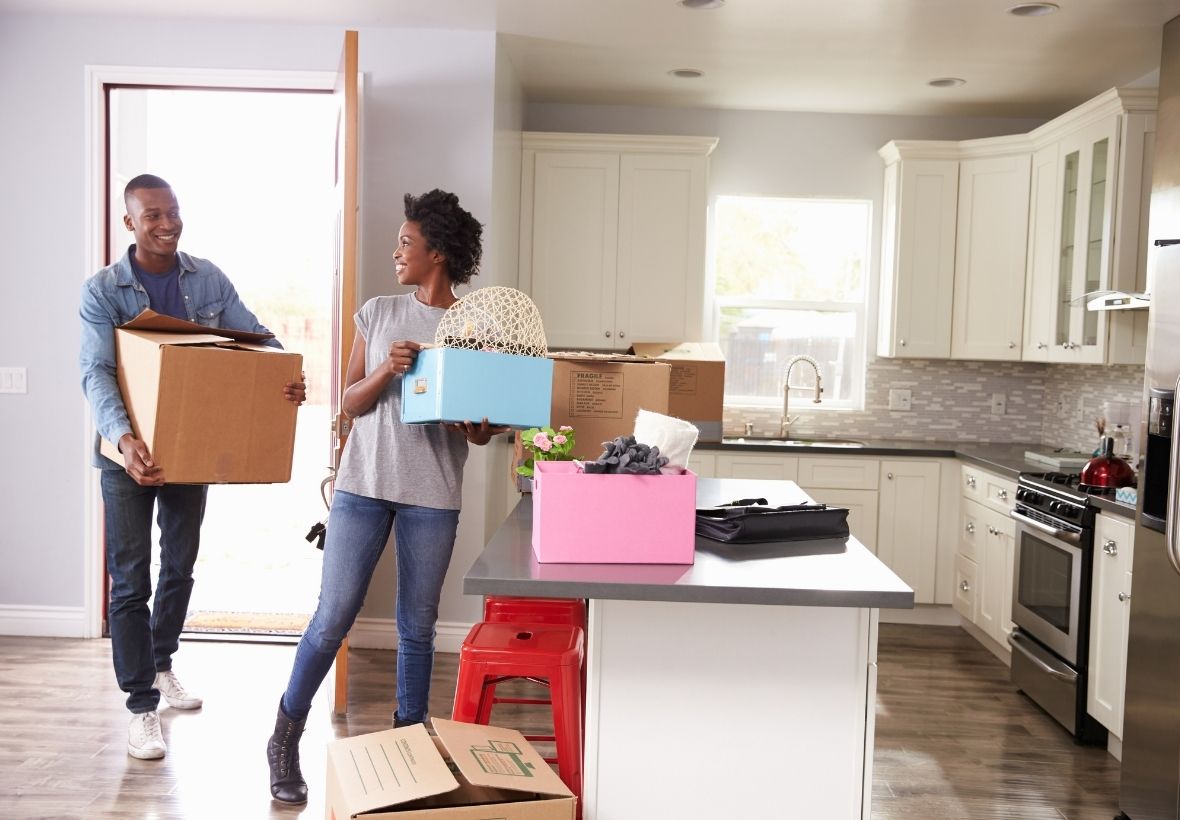Moving can be a challenging task, but with expert packing tips and the assistance of professional movers in Brampton, you can ensure a successful and stress-free move. In this article, we will provide valuable insights and strategies to help you pack your belongings efficiently, protect fragile items, and make the most of your moving experience with trusted movers in Brampton.
Expert Packing Tips for a Successful Move with Professional Movers
Moving can be a daunting task, but with the right approach, it can also be a smooth and stress-free experience. Here are some expert packing tips to help you make the most of your move with professional movers:
1. Start Early and Create a Moving Checklist
The key to a successful move is to start early and stay organized. Begin by creating a comprehensive moving checklist that outlines all the tasks you need to accomplish before, during, and after the move. This will help you stay on track and ensure that nothing is overlooked. Include items such as packing supplies, contacting utility companies, and notifying change of address to important parties.
2. Declutter and Get Rid of Unwanted Items
Decluttering is an essential step in the moving process. It not only helps you reduce the number of items you need to pack but also ensures that you start fresh in your new home. Here are some tips to effectively declutter and get rid of unwanted items:
- Assess your belongings: Begin by going through each room and assessing your belongings. Ask yourself if you have used the item in the past year or if it holds sentimental value. If the answer is no, it’s a good indication that you can part with it.
- Sort into categories: Create categories for the items you’re decluttering. Common categories include keep, donate/sell, and discard. This will help you stay organized and make decisions about each item more efficiently.
- Consider the 80/20 rule: The 80/20 rule suggests that we only use about 20% of our belongings regularly. Keep this rule in mind when decluttering. Focus on keeping items that you truly need or bring you joy, and let go of the rest.
- Donate or sell usable items: If you come across items that are in good condition but no longer serve a purpose for you, consider donating them to charity or selling them online. Not only will this help someone else in need, but it can also generate some extra cash.
- Dispose of unusable items responsibly: For items that are broken, damaged, or no longer usable, it’s important to dispose of them responsibly. Check with your local waste management services to find out the best way to dispose of these items in an environmentally friendly manner.
- Start small: Decluttering can be overwhelming, especially if you’ve accumulated a lot of belongings over the years. Start with small areas like a drawer or a closet to build momentum. Once you see the progress, it will be easier to tackle larger spaces.
- Get the whole family involved: If you’re moving with your family, involve everyone in the decluttering process. Assign tasks and encourage open communication about the items each person wants to keep or let go of. This will make the process more efficient and help everyone feel involved.
- Let go of sentimental items: Sentimental items can be challenging to part with, but it’s important to evaluate their true significance in your life. Consider taking photographs of sentimental items before letting them go. This way, you can keep the memories without cluttering your new space.
By decluttering and getting rid of unwanted items, you’ll not only make the packing process easier but also create a fresh start in your new home. Remember, less is often more, and the items you choose to keep should bring value and joy to your life.
3. Use High-Quality Packing Supplies
Using high-quality packing supplies is crucial to ensure the safety of your belongings during the moving process. Here are some essential packing supplies you should invest in:
|
Packing Supply |
Description |
|
Cardboard Boxes |
Strong and sturdy cardboard boxes provide the foundation for packing. Choose boxes of various sizes to accommodate different items. |
|
Bubble Wrap |
Bubble wrap is a protective material with air-filled bubbles that provide cushioning for fragile and delicate items. |
|
Packing Paper |
Packing paper is ideal for wrapping and protecting items such as glassware, dishes, and other fragile possessions. |
|
Packing Tape |
Use packing tape to securely seal boxes and reinforce their strength. Look for heavy-duty tape that will hold up during the moving process. |
|
Furniture Covers |
Furniture covers, such as plastic or fabric wraps, protect your furniture from scratches, dirt, and other potential damage during transportation. |
By using high-quality packing supplies, you can ensure that your belongings are well-protected and arrive safely at your new home. Invest in these essential packing supplies to safeguard your items during the moving process.
4. Pack Room by Room
To stay organized and avoid chaos, pack one room at a time. Start with the rooms that are used less frequently, such as the attic or basement, and gradually move towards the more essential areas of your home. Label each box with the room it belongs to and a brief description of its contents. This will make unpacking much easier and more efficient.
5. Secure Fragile Items Properly
Properly securing fragile items is crucial to prevent damage during the moving process. Here are some effective methods for securing fragile items:
|
Method |
Description |
|
Bubble Wrap |
Wrap fragile items such as glassware, china, and electronics with bubble wrap. The air-filled bubbles provide cushioning and protect the items from impact. |
|
Packing Paper |
Use packing paper to wrap delicate items individually or as an additional layer of protection within boxes. |
|
Foam Peanuts |
Fill empty spaces in boxes with foam peanuts to prevent items from shifting during transportation. |
|
Dividers or Cell Kits |
For delicate items like stemware or dishes, use dividers or cell kits designed specifically to separate and protect each item individually. |
|
Dish Barrel Box |
Consider using dish barrel boxes, which are specially designed with thicker walls and additional protection to safeguard fragile dishes and glassware. |
By utilizing these methods, you can ensure that your fragile items are well-protected and arrive at your new home in one piece. Take the time to secure fragile items properly to minimize the risk of damage during the move.
6. Disassemble Furniture for Easy Transportation
Large furniture pieces can be difficult to maneuver through narrow doorways and hallways. Disassemble any furniture that can be taken apart to make it easier to transport. Keep the screws, bolts, and other small parts in a labeled bag or container and tape it securely to the furniture item. This way, you won’t lose any crucial pieces during the move.
7. Take Inventory of Your Belongings
Taking inventory of your belongings is a crucial step in the moving process. It helps you keep track of your items, ensures nothing gets lost or misplaced during the move, and provides documentation for insurance purposes. Here’s how you can effectively take inventory:
- Create a checklist: Start by creating a checklist or spreadsheet to document all your belongings. Divide it into categories, such as furniture, electronics, kitchenware, clothing, etc.
- Room-by-room approach: Take a room-by-room approach to make the process more manageable. Begin with one room and list down all the items it contains. Be thorough and include even the smallest items.
- Include descriptions: Along with the item names, include descriptions of each item. Note down any unique features, brand names, model numbers, or any other relevant details that can help identify the item.
- Photograph or video: To supplement your inventory list, take photographs or videos of valuable or high-ticket items. This serves as additional documentation and can be useful for insurance purposes.
- Note the condition: As you document each item, make a note of its current condition. This is particularly important for fragile or valuable items. If there are any pre-existing damages, be sure to document them.
- Label boxes and containers: As you pack your belongings, label each box or container with a corresponding number or label that matches your inventory list. This way, you can easily locate items when unpacking.
- Keep a digital copy: Make a digital copy of your inventory checklist and store it securely in the cloud or on an external hard drive. This ensures that you have a backup in case anything happens to the physical copy.
Taking inventory of your belongings not only helps you stay organized during the move but also provides peace of mind knowing that you have a detailed record of your possessions. It’s a small step that can save you a lot of time and effort in the long run.
Remember to update your inventory list if any changes occur, such as selling or acquiring new items. By keeping an accurate inventory, you can ensure a smooth and organized moving process.
8. Communicate Clearly with the Movers
Effective communication is key to a successful move. Clearly explain your expectations to the professional movers and provide them with any necessary instructions. Let them know about any fragile or valuable items that require extra care. Being proactive in your communication will ensure that your belongings are handled safely and reach your new home in good condition.
9. Pack an Essentials Box
When you arrive at your new home, you may not have immediate access to all your belongings. To make the transition easier, pack an essentials box containing items you’ll need right away, such as toiletries, medications, a change of clothes, and important documents. This will save you from rummaging through multiple boxes to find essential items.
10. Label Boxes Clearly
Labeling boxes clearly is an essential aspect of a successful move. When you label boxes properly, you make the unpacking process much easier and more efficient. Here are three reasons why labeling boxes clearly is crucial:
Firstly, clear labeling allows you to quickly identify the contents of each box without having to open them. By including a brief description of the items inside and the room they belong to, you can easily prioritize which boxes to unpack first. This is especially helpful when you arrive at your new home and want to locate specific items quickly, such as essential kitchen supplies or bathroom essentials.
Secondly, labeling boxes clearly helps professional movers know where to place each box in your new home. When the boxes are labeled with the corresponding room, the movers can easily determine where each box should be placed, saving you time and effort in rearranging later. This level of organization also minimizes the chances of items being misplaced or ending up in the wrong room during the move.
Lastly, clear labeling provides an added layer of protection for fragile or delicate items. By clearly marking boxes as fragile, the movers are aware that these boxes require extra care and attention during transportation. This ensures that fragile items are handled properly and reduces the risk of damage.
- When it comes to labeling boxes, it’s important to use legible and permanent markers. Write the labels on multiple sides of the box to ensure visibility, even if some sides are hidden when stacked. You can also color-code the boxes for each room, using different colored markers or colored labels. This makes it even easier to identify and sort the boxes upon arrival.
In summary, labeling boxes clearly is a simple yet highly effective way to streamline your move. It allows for easy identification, helps movers with proper placement, and provides an added layer of protection for fragile items. Taking the time to label your boxes properly will undoubtedly make the unpacking process much smoother and more efficient.
Frequently Asked Questions (FAQs)
Q: How far in advance should I start packing for a move?
Starting early is always a good idea when it comes to packing for a move. Ideally, you should begin packing at least a few weeks before your moving date. This will give you ample time to sort through your belongings, declutter, and pack in an organized manner.
Q: Can I leave clothes in the drawers when moving?
Leaving clothes in the drawers can make them heavier and more difficult to move. It’s generally recommended to remove the clothes from the drawers and pack them separately in boxes or garment bags. This will make the furniture lighter and reduce the risk of damage during transportation.
Q: Should I purchase insurance for my move?
While professional movers take precautions to ensure the safety of your belongings, accidents can still happen. It’s a good idea to consider purchasing moving insurance to protect your items in case of any unforeseen events. Consult with your moving company to understand their insurance policies and coverage options.
Q: How can I ensure the safety of fragile items during the move?
To ensure the safety of fragile items during the move, use appropriate packing materials such as bubble wrap, packing paper, or foam peanuts. Pack fragile items in sturdy boxes and label them as fragile to alert the movers. Additionally, communicate with the movers about the delicate nature of these items and any specific handling instructions.
Q: Should I pack heavy items in large boxes?
It’s best to avoid packing heavy items in large boxes as they can become difficult to carry and may increase the risk of damage. Instead, use smaller boxes for heavy items to ensure they can be lifted safely. Distribute the weight evenly across the boxes and reinforce them with packing tape for added strength.
Q: Do professional movers provide packing services?
Many professional moving companies offer packing services as an additional service. If you prefer to have the movers handle the packing process as well, inquire about their packing services during the initial consultation. They can provide you with a customized quote based on your specific packing needs.
Moving can be a stressful experience, but with the help of professional movers and the right packing strategies, it can also be a successful and smooth transition. By starting early, decluttering, using high-quality packing supplies, and communicating effectively with the movers, you can ensure that your belongings are well-protected and reach your new home safely. Remember to stay organized, label your boxes clearly, and take inventory of your items for added peace of mind. Follow these expert packing tips, and your move with professional movers will be a breeze!






